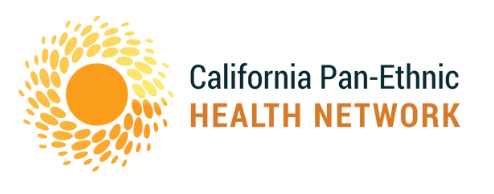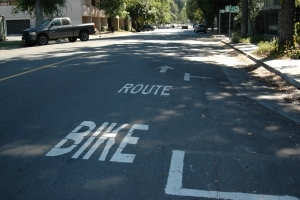Cross-posted from TransForm’s blog.
Transportation is supposed to help us get from one place to another. But for many Californians, our transportation system instead creates huge barriers – to health, safety, opportunity, and more.
Our transportation system is a barrier to health when kids get asthma from tailpipe pollution because there are too many cars on the road, and no other options. It’s a barrier to safety when a family has no sidewalks between their home and their school. And it’s a barrier to opportunity when getting to work requires you to own a car and pay for gas – or spend hours on insufficient public transportation.
These barriers are worst in low-income communities and communities of color, where transportation officials have been more likely to build highways that divide and pollute neighborhoods, and less likely to build sidewalks, bike lanes, and reliable public transportation.
We didn’t arrive at this transportation system by mistake. Instead, there’s a long history of making choices to prioritize car travel and wealthier communities over the needs of California’s most vulnerable.
We’ve seen our leaders begin to shift their thinking in the realm of sustainability, and make sure our climate investments benefit all Californians. But they have not done the same with the much larger pots of money used to maintain and expand our roads and highways.
Until now.
This year, leaders in the state Capitol are forging a new path, proposing bills in the Legislature that would make tremendous strides toward a more effective and equitable transportation system. These bills would go a long way in providing real transportation choices for all Californians, improving safety, and saving families billions of dollars each year. TransForm and our partners are supporting this Transportation Equity Package as a way to begin removing barriers of the past, and investing a more connected and fair California.
These bills include:
- AB 2222 (Chris Holden, D-Pasadena) – to provide $50 million for free and reduced-fare transit passes;
- AB 2332 (Eduardo Garcia, D-Coachella) – to prioritize Caltrans maintenance in disadvantaged communities;
- AB 2796 (Low, D-Los Gatos/Bloom, D-Santa Monica) – to provide bicycle/pedestrian planning money for disadvantaged communities, and guarantee funding for bicycle and pedestrian safety; and
- AB 1982 (Bloom, D-Santa Monica) – to specify that cap-and-trade funds for synchronized lights be used only in ways that improve safety and encourage biking and walking.
These bills, as well as the ongoing conversation around transportation funding and the state budget, will have a tremendous influence on all Californians. TransForm and our allies are pushing for these reforms and guarantees, and pushing to fund transportation projects that will improve the quality of life for communities throughout the state.
But what, exactly, does an equitable transportation system look like? And how can a bill even make that happen? Read on to see how these bills can begin to address some of our state’s most entrenched inequities.
What does transportation equity look like?
- Transportation Equity prioritizes our most disadvantaged communities.
A transportation system that works for all of us starts by prioritizing those communities who have, for decades, been overlooked, overpassed, and underfunded. For this reason, we are supporting AB 2332 (E. Garcia), a bill to require that Caltrans put our state’s most disadvantaged communities first when determining which roads to maintain and improve.
- Transportation Equity means building projects that benefit all Californians, including the more than 10,000,000 people who do not drive.
These requirements do little if we don’t increase the money available for projects to actually implement reforms. So TransForm and our allies are pushing legislation to add $100 million to the state’s Active Transportation Program (ATP) – the pot of money dedicated to bicycle and pedestrian projects.
And to ensure that ALL Californians benefit from these projects, TransForm and our allies support AB 2796 (Low & Bloom), that requires a minimum of 5% of the ATP be set aside for planning bicycle and pedestrian infrastructure in disadvantaged communities, and 10-30% of the ATP be spent on safety programs, like Safe Routes to School, that keep our children safe on today’s streets and roads.
- Transportation Equity provides real choices for getting around, regardless of the distance or location
Public transportation can be seen as a last resort, but that’s substantially a result of public policy decisions. Cars are most often subsidized through huge, fancy freeways and highways, on- and off-ramps built to move cars fast, traffic lights synchronized for car speeds, and myriad other ways. As a result, transit service isn’t capturing anywhere near all of its potential ridership.
This is why TransForm is co-sponsoring AB 2222 (Holden), which would invest $50 million of the GGRF into a new transit pass program for students and low-income housing residents. Investing in transit passes, especially for youth and those who would take transit more frequently if not for the cost, is a sure-fire way to grow ridership, develop life-long habits of riding transit as a way to get around, and reduce our carbon footprint.
We are also supporting AB 1982 (Bloom), which would require that any traffic light synchronization projects funded with Greenhouse Gas Reduction Fund dollars only pay for lights that work for bicyclists and improve pedestrian safety.
Too many people simply do not have safe, reliable access to frequent public transportation, even if they wanted to ride it. Oftentimes, transit service doesn’t reach sufficiently into neighborhoods where people who are most likely to use the service live, work, and play. Other times, fare increases create a vicious cycle, driving away the most likely transit users and causing ridership numbers to drop.
So, while TransForm and our allies support the Governor’s investments of the Greenhouse Gas Reduction Fund (GGRF) into transit – capital and operations – we see a vital need for better transit service right now. This is why we are asking that the $400 million proposed by the Governor in his budget for transit capital projects be split 50-50 with transit operations.
In transportation, climate investments = community investments
By prioritizing and investing in communities who are most likely to walk, bike, and use public transportation, we are directly helping the people who are struggling the most. It’s a way to connect more people to opportunity – and also directly address our state’s largest source of greenhouse gas emissions: car travel.
Car travel is directly responsible for nearly forty percent of California’s climate pollution, and indirectly responsible for much, much more (from oil drilling to road building to manufacturing and repairing automobiles). Yet our leaders have neglected to incorporate climate priorities into traditional transportation decisions, perpetuating the problems that helped create this climate crisis, and continuing to turn a blind eye to community needs.
We have a model in our climate investments program for how to put vulnerable and historically marginalized communities first, and we should bring that lens to our transportation programs too. California can advance social justice in our state by investing in real transportation choices – and lead the world by example, using a strategy rooted in equity to reduce our carbon footprint.
The key to California’s success will be to recognize the barriers we’ve built, and then dismantle them, to ensure that all Californians get where they need to go safely, reliably, and efficiently.
For more information about state legislation and funding, click here or contact Joshua Stark at TransForm.

